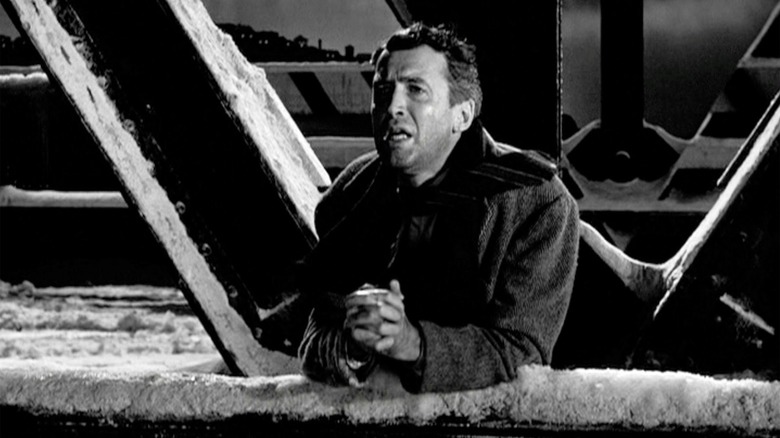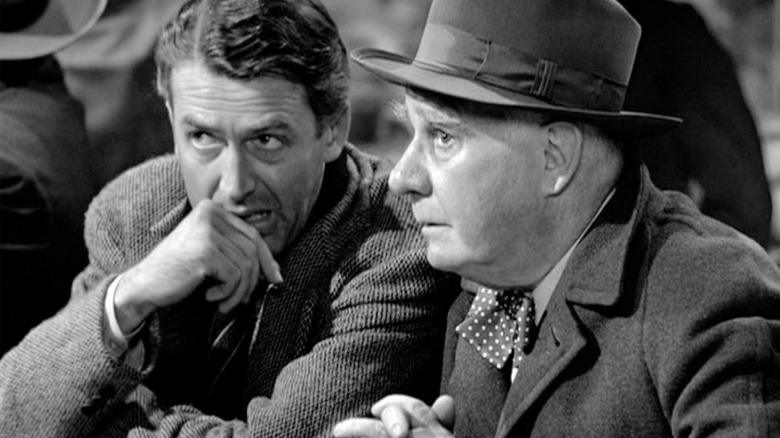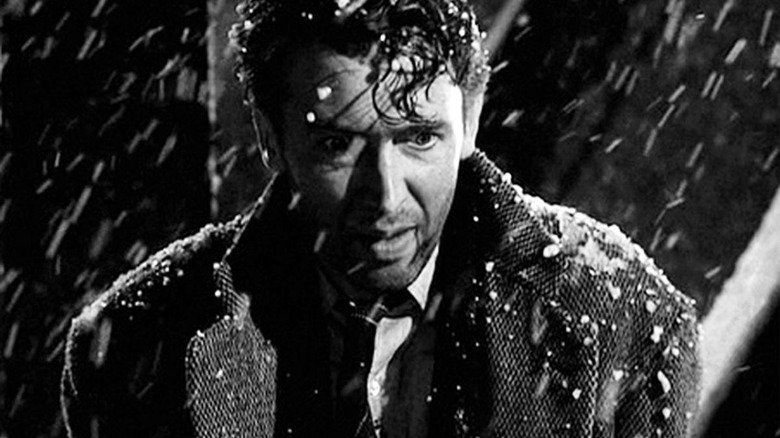James Stewart's Favorite Movie Of His Was A 1940s Classic
James Stewart began his professional acting career on the stage in the early 1930s, and it wasn't the rosiest beginning. He was cast in a string of walk-on parts and stage manager positions on Broadway and was canned from several of them for missing his cues. Still in his mid-20s, Stewart even contemplated leaving acting behind and returning to school. Luckily, he landed the lead role in a play called "Yellow Jack" in 1934, and critics loved him. Encouraged to stay in showbiz, Stewart drifted toward Hollywood, where he starred in his first film, Tim Whelan's "The Murder Man," in 1935.
From there, it was a meteoric rise for Stewart, who appeared in six feature films in 1936 alone, working for prestigious and successful directors like William Wellman and W.S. Van Dyke. Stewart's acting career would take a serious upturn in 1938 when he starred in "You Can't Take It With You," his first of three collaborations with the Italian-American master Frank Capra (the other two being 1939's "Mr. Smith Goes to Washington" and 1946's "It's a Wonderful Life"). Stewart often returned to the directors he admired, as he also appeared in three films directed by John Ford, four directed by Alfred Hitchcock, and eight directed by Anthony Mann.
Stewart would rack up over 80 credits in his career besides. He would be nominated for five Academy Awards, winning one (for "The Philadelphia Story"). While exhibiting a great deal of range, Stewart emerged from Hollywood with an innocent, "Aw shucks" persona. He was a gentle everyman with a good heart. Stewart rarely played heavies or thugs. His noted persona made his darker roles stand out just that much more sharply. When he becomes a psychosexual terror in "Vertigo," it feels especially wrong. When he contemplated suicide in "It's a Wonderful Life," it felt truly bleak.
In 1987, Stewart wrote a retrospective of "It's a Wonderful Life," and it has been handily preserved by the Guideposts website. He said it was his favorite movie.
The best he's ever done
Of course, "It's a Wonderful Life" is well entrenched in the pop consciousness, often screened in theaters and broadcast on television every Christmas. Many classic film buffs also know its struggle to find success. "Wonderful" notoriously bombed at the box office, and was even investigated by the FBI for its "Communist" leanings; notably, the film depicted the capitalist banker Mr. Potter (Lionel Barrymore) as a villainous and greedy "Scrooge type," who was designed to be hated. The FBI felt that was enough to suspect Frank Capra of selling anti-American, anticapitalist ideas to the public.
Years later, "It's a Wonderful Life" began running on television every Christmas, and audiences soon took notice. Eventually, it came to be an expected holiday tradition and was reassessed as one of the best films ever made. It's a story of despair and hope, of money and the soul, and contains a "Twilight Zone" like a fable in the middle. To briefly recap: Stewart plays George Bailey, whose life has gone south after a banking error. While contemplating taking his own life, George is visited by an angel named Clarence (Henry Travers) who walks him through his life. At the end of the film, Clarence even shows him an alternate universe where he was never born, and George sees that his beloved hometown would have been ruined by greed, and his friends and loved ones corrupted. He returns to reality with a new lease on life. Hope is restored.
In his 1987 retrospective, Stewart began:
"A friend told me recently that seeing a movie I made more than 40 years ago is a holiday tradition in his family. That movie is 'It's a Wonderful Life,' and out of all the 80 films I've made, it's my favorite."
This is saying something, given the number of classics Stewart appeared in.
'I'm your man'
Stewart then tells an amusing anecdote about how he got the role. World War II had just ended, and he was hurting for work. Stewart recalls bumming around public parks with his friend, Henry Fonda, flying kites and shooting the breeze. "Nothing much was happening," he wrote.
Then Stewart got a call from Frank Capra, who had been making an epic war documentary called "Why We Fight." Capra had the story for "It's a Wonderful Life" and wanted to pitch it to Stewart, hoping he would star. Capra, it seems, did a very lousy job of summing up the story, not really making the central gist very clear to Stewart. Capra rambled about how the story began in Heaven, and how Angels have to earn their wings, and how George Bailey was about to jump off a bridge, and then the Angel falls in the water and George has to save him, and then... It was a long, run-on sentence. Stewart recalls Capra saying, "This doesn't tell very well, does it?"
Stewart, of course, was happy to have been asked, so before Capra could finish, he merely blurted out:
"Frank, if you want to do a picture about a guy who jumps off a bridge and an angel named Clarence who hasn't won his wings yet coming down to save him, well, I'm your man!"
Stewart eventually concluded that:
"It's simply about an ordinary man who discovers that living each ordinary day honorably, with faith in God and a selfless concern for others, can make for a truly wonderful life."
As mentioned, "Wonderful" has become a Christmas tradition, and frequently tops lists of the best movies of all time. Stewart, it seems, has good taste.


